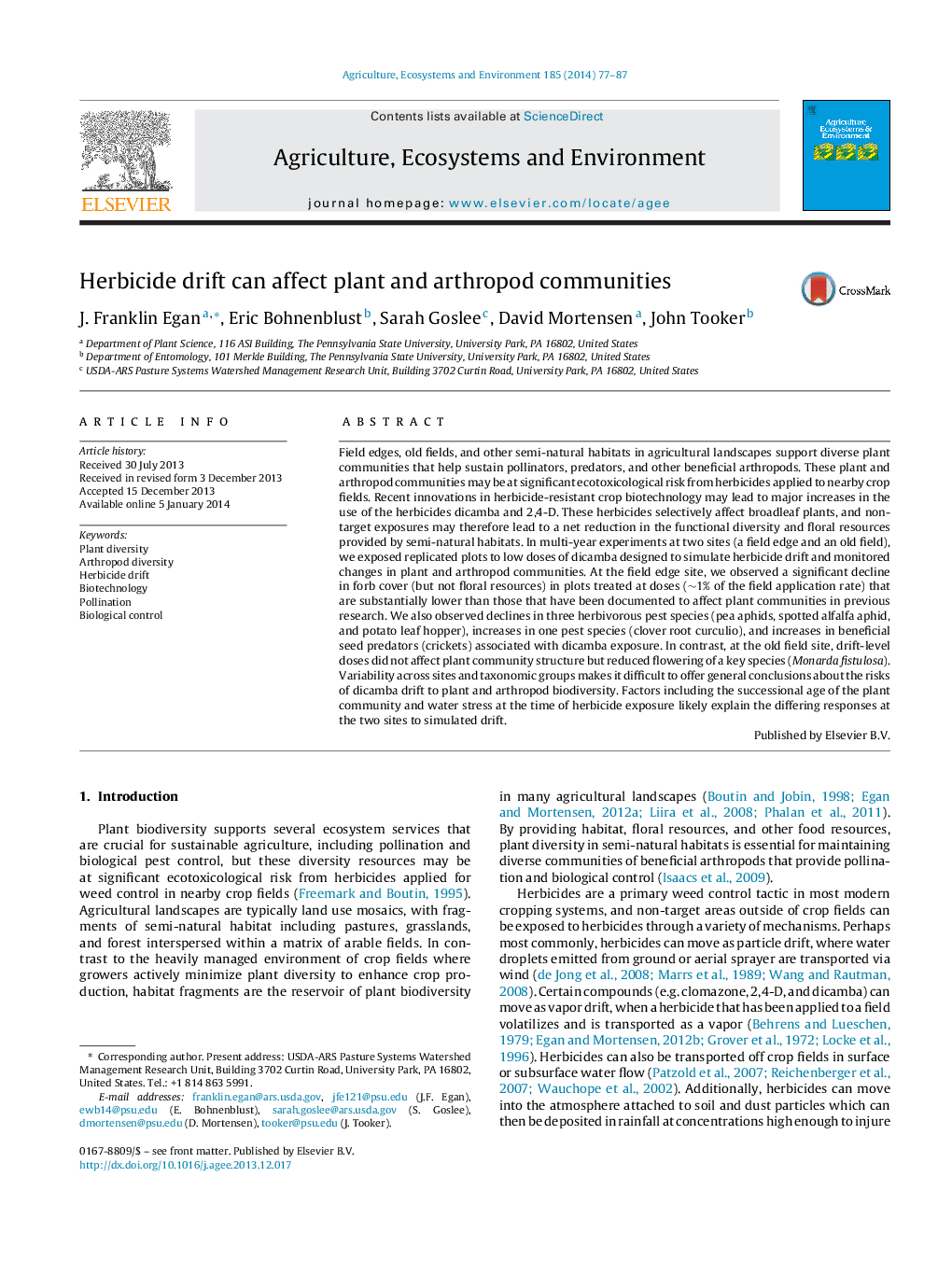| کد مقاله | کد نشریه | سال انتشار | مقاله انگلیسی | نسخه تمام متن |
|---|---|---|---|---|
| 2414070 | 1552067 | 2014 | 11 صفحه PDF | دانلود رایگان |
• Low doses of dicamba can reduce abundance and flowering of forbs.
• Arthropod groups can respond positively or negatively to dicamba.
• Successional dynamics and soil moisture may affect community response to dicamba.
Field edges, old fields, and other semi-natural habitats in agricultural landscapes support diverse plant communities that help sustain pollinators, predators, and other beneficial arthropods. These plant and arthropod communities may be at significant ecotoxicological risk from herbicides applied to nearby crop fields. Recent innovations in herbicide-resistant crop biotechnology may lead to major increases in the use of the herbicides dicamba and 2,4-D. These herbicides selectively affect broadleaf plants, and non-target exposures may therefore lead to a net reduction in the functional diversity and floral resources provided by semi-natural habitats. In multi-year experiments at two sites (a field edge and an old field), we exposed replicated plots to low doses of dicamba designed to simulate herbicide drift and monitored changes in plant and arthropod communities. At the field edge site, we observed a significant decline in forb cover (but not floral resources) in plots treated at doses (∼1% of the field application rate) that are substantially lower than those that have been documented to affect plant communities in previous research. We also observed declines in three herbivorous pest species (pea aphids, spotted alfalfa aphid, and potato leaf hopper), increases in one pest species (clover root curculio), and increases in beneficial seed predators (crickets) associated with dicamba exposure. In contrast, at the old field site, drift-level doses did not affect plant community structure but reduced flowering of a key species (Monarda fistulosa). Variability across sites and taxonomic groups makes it difficult to offer general conclusions about the risks of dicamba drift to plant and arthropod biodiversity. Factors including the successional age of the plant community and water stress at the time of herbicide exposure likely explain the differing responses at the two sites to simulated drift.
Journal: Agriculture, Ecosystems & Environment - Volume 185, 1 March 2014, Pages 77–87
